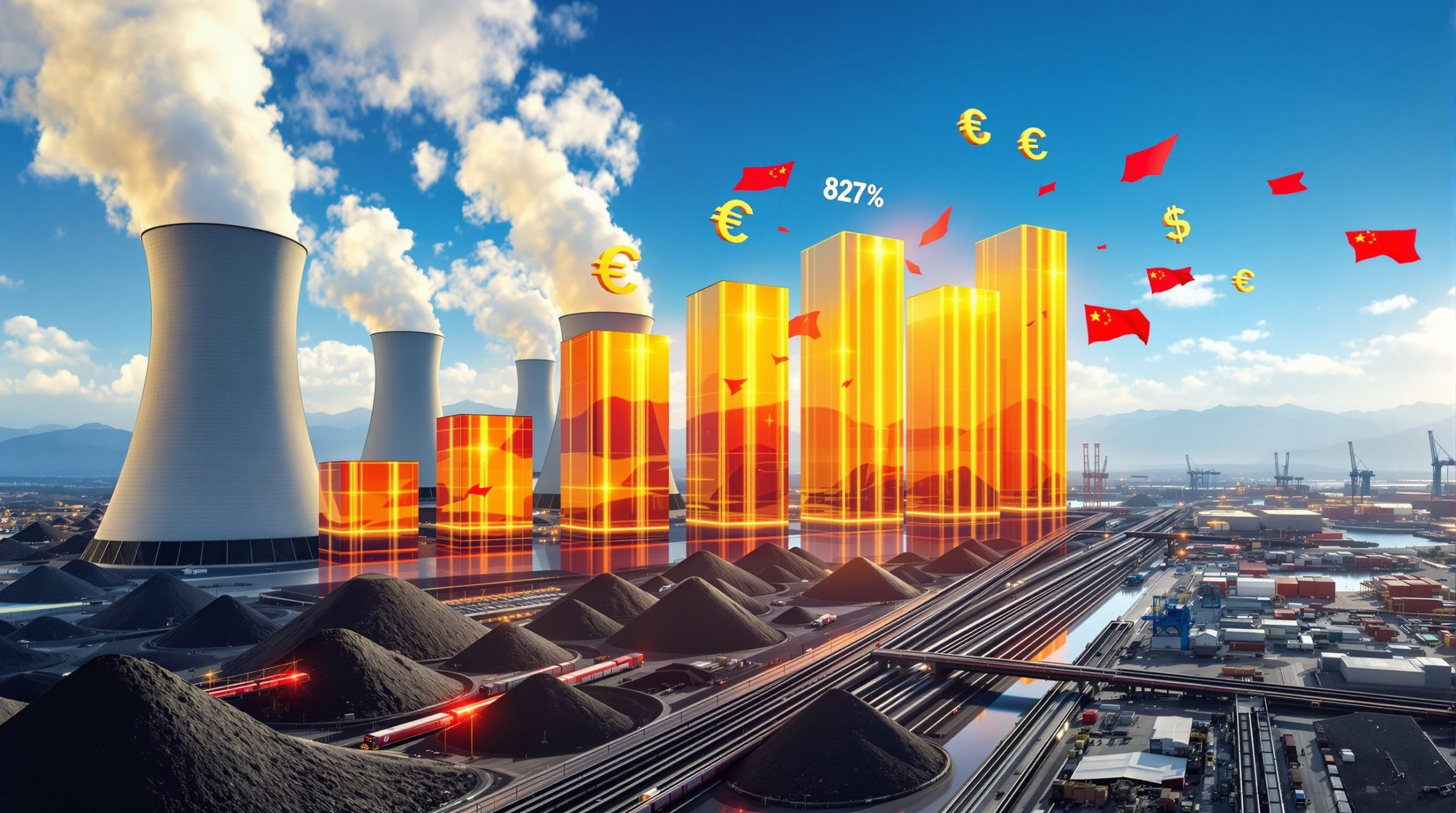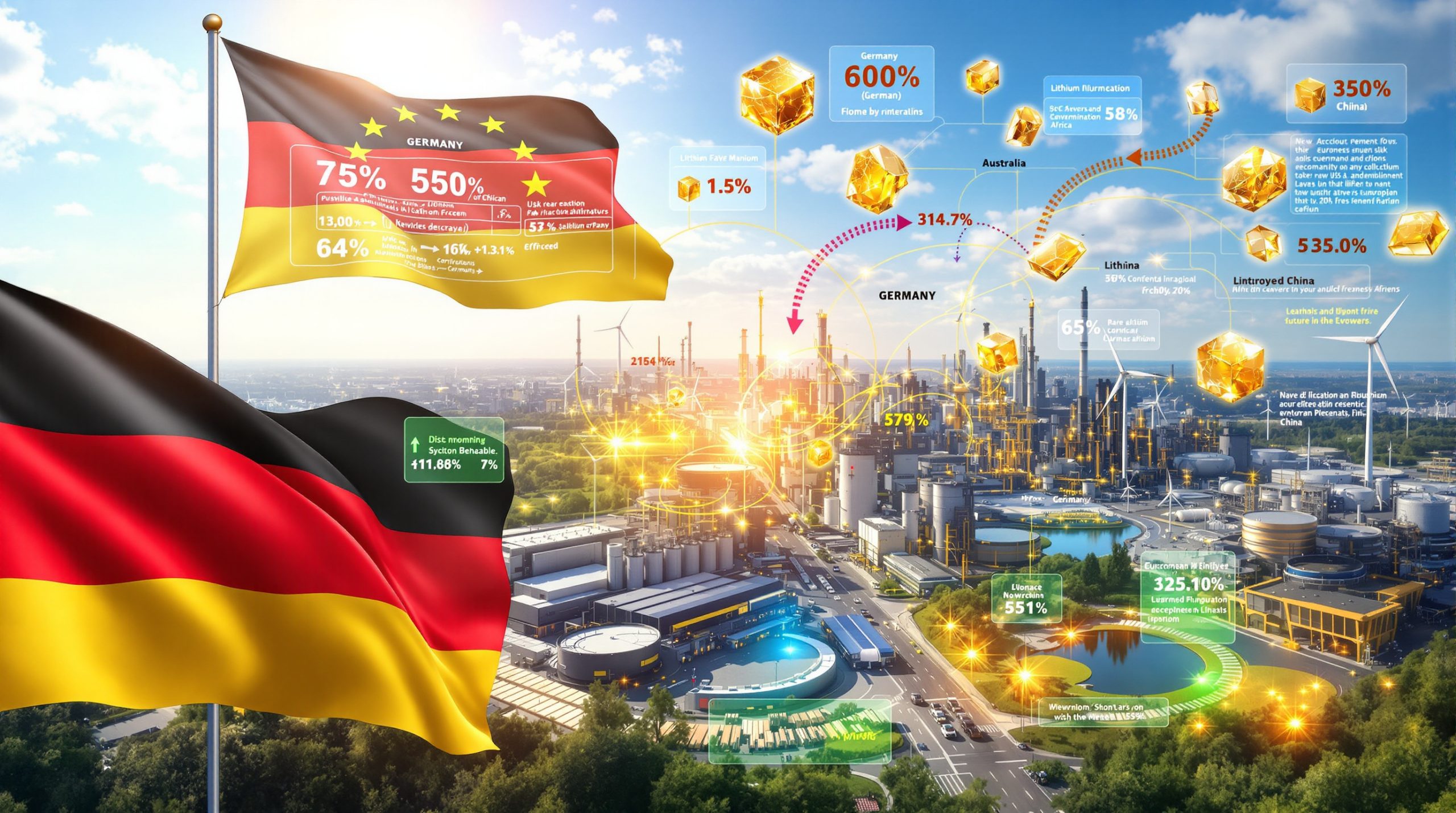The global supply chain vulnerabilities have created unprecedented opportunities for innovative material recovery systems. As traditional mining operations face mounting geopolitical pressures and environmental constraints, the intersection of circular economy principles with critical mineral security has emerged as a defining strategic battleground. The rare earth recycling partnership sector demonstrates how technological advancement, regulatory mandate, and market demand are reshaping how industries approach resource scarcity, particularly where material availability directly impacts national security infrastructure.
The Economics of Critical Material Recovery
Market projections for recycled rare earth elements indicate substantial growth potential through 2030, with industry analysts estimating the sector could reach $2.8 billion globally by the end of the decade. This represents a compound annual growth rate exceeding 15%, driven primarily by supply chain diversification initiatives across developed economies.
Cost comparison analysis reveals compelling economic advantages for recycling operations versus primary mining in specific scenarios. While traditional hard rock rare earth mining requires capital expenditures ranging from $500 million to $1.5 billion for new operations, commercial-scale recycling facilities typically demand initial investments between $25 million and $75 million. However, these figures mask critical operational complexities that significantly impact long-term profitability.
Furthermore, recent developments in Chinese battery recycling breakthrough technologies demonstrate how rapid innovation cycles can disrupt traditional cost structures. This technological evolution creates both opportunities and challenges for established recycling partnerships.
Key Economic Variables for Recycling Operations:
- Feedstock acquisition costs: $8-15 per kilogram of magnet-bearing material
- Processing costs: $45-85 per kilogram of refined oxide output
- Energy consumption: 35-60% lower than primary production
- Labor intensity: 2-3x higher skilled technician requirements
- Regulatory compliance: $2-4 million annually for environmental monitoring
Investment capital requirements for commercial-scale processing facilities vary dramatically based on target purity levels and throughput capacity. Facilities targeting 99.99%+ purity oxides for defence applications require specialised separation equipment costing $15-25 million beyond standard industrial processing systems.
This premium reflects the technical challenges of achieving military specification grades from contaminated feedstock sources. Revenue potential from high-purity oxide production creates attractive margin opportunities when market conditions align. Premium-grade neodymium oxide commands pricing 25-40% above standard commercial grades, while dysprosium oxide premiums can reach 60-80% for ultra-high purity specifications.
Strategic Partnership Models in Critical Materials
Vertical integration approaches spanning collection to refinement represent the most capital-intensive but potentially highest-return partnership structures. Companies pursuing this model typically invest $100-200 million across the value chain, establishing controlled feedstock flows while capturing margin at each processing stage.
The electronics recycling industry processes approximately 6.2 million tons of e-waste annually in North America, with magnet-containing devices representing roughly 8-12% of total volume. However, actual rare earth element content varies significantly across device categories.
In addition, major corporations like Glencore have initiated comprehensive critical minerals recycling transition programmes that reshape industry partnership dynamics.
| Device Category | REE Content (grams/unit) | Annual Volume (millions) | Recovery Potential (tonnes) |
|---|---|---|---|
| Hard Disk Drives | 15-25 | 145 | 2,175-3,625 |
| Wind Turbine Generators | 150-600 kg | 0.8 | 120-480 |
| Electric Vehicle Motors | 1-3 kg | 2.8 | 2.8-8.4 |
| Consumer Electronics | 0.5-2 | 285 | 142.5-570 |
Horizontal collaboration frameworks across industry sectors offer risk distribution benefits while requiring complex coordination mechanisms. Automotive manufacturers, wind energy developers, and electronics producers each generate distinct waste streams with varying contamination profiles and seasonal availability patterns.
Risk-sharing mechanisms between technology and logistics partners have evolved beyond simple cost-sharing arrangements. Modern partnerships incorporate sophisticated hedging structures, including:
- Feedstock price floors: Guaranteed minimum payments for consistent supply
- Technology performance guarantees: Recovery rate commitments with penalty clauses
- Market access provisions: Exclusive customer relationships for specified product grades
- Intellectual property cross-licensing: Shared development costs for process improvements
Intellectual property licensing structures for recycling technologies present both opportunity and complexity. Core separation technologies often involve 15-25 patent families, creating substantial licensing fee obligations for new entrants. Established players leverage patent portfolios to secure favourable partnership terms while newer companies must navigate extensive IP landscapes.
Feedstock Aggregation Strategies
Electronics waste stream analysis reveals significant variations in rare earth element concentrations based on device age and manufacturer specifications. Devices manufactured between 2008-2015 typically contain 30-50% higher rare earth content compared to current production models, creating premium value opportunities for collectors focusing on older equipment streams.
Collection network optimisation requires sophisticated logistics coordination to achieve economic efficiency. Industry data indicates minimum viable collection densities of 500-750 tonnes annually within 150-mile radius catchment areas for commercial sustainability. Urban markets provide higher device density but increased competition, while rural areas offer lower collection costs but reduced volume concentrations.
Moreover, innovative approaches like flash joule heating innovation are transforming traditional feedstock processing methodologies, enabling higher recovery rates from previously challenging material streams.
Critical Success Factors for Collection Networks:
- Partnership agreements with major electronics retailers for end-of-life device capture
- Reverse logistics integration with existing waste management infrastructure
- Quality assessment protocols for rapid rare earth content evaluation
- Storage and handling systems for contaminated and mixed material streams
- Transportation optimisation to minimise per-unit collection costs
Quality control protocols for contaminated feedstock management represent ongoing operational challenges requiring specialised expertise. Magnet materials often contain metallic contamination, plastic and adhesive residues, coating materials, and mixed rare earth compositions requiring complex separation protocols.
Seasonal variation impacts on material availability create planning complexities for consistent operation scheduling. Consumer electronics replacement cycles peak during Q4 holiday seasons, creating 40-60% higher collection volumes compared to Q1-Q2 periods. Industrial equipment retirement follows different patterns, with wind turbine decommissioning concentrated in spring maintenance seasons.
Technology Integration Requirements
Processing capacity scaling from pilot to commercial operations involves substantial technical risk management. Pilot facilities typically operate at 100-500 kg/day throughput levels, while commercial viability requires 5-15 tonnes/day consistent processing capacity. This 10-30x scaling factor introduces equipment reliability challenges, quality control complexities, and workforce training requirements not apparent at laboratory scales.
Purification technology benchmarks for defence-grade applications demand exceptional precision and consistency. Military specifications require total rare earth oxide purity of 99.99% minimum, individual element purity of 99.95% for critical elements like dysprosium, and strict metallic impurity limits.
Automation systems for consistent output quality represent significant capital investment categories. Modern rare earth recycling partnership operations incorporate automated material handling systems costing $2-4 million, process control systems with real-time monitoring capabilities, quality assurance integration, and comprehensive data management platforms.
Environmental compliance frameworks for chemical processing operations require comprehensive permitting and monitoring systems. Processing facilities must maintain air emission controls, wastewater treatment capabilities, solid waste management protocols, and emergency response planning procedures.
Consequently, operators increasingly seek comprehensive waste management solutions that integrate seamlessly with their existing processing infrastructure.
Market Positioning Analysis
Competitive landscape mapping reveals a fragmented but rapidly evolving domestic rare earth refining sector. Current market leaders include MP Materials with 15,000 tonnes annual separation capacity, Energy Fuels developing 5,000 tonnes projected capacity, and emerging players targeting smaller but specialised market segments.
Customer qualification processes for high-purity oxide buyers involve extensive validation procedures that can require 6-18 months completion timeframes. Defence contractors and aerospace manufacturers maintain approved supplier lists requiring security clearance verification, quality system certification, supply chain transparency documentation, and financial stability assessment.
Pricing strategy development against imported alternatives must account for multiple value proposition factors beyond simple cost comparison. Domestic recycled materials command premium pricing based on supply security assurance, quality consistency, delivery reliability, and regulatory compliance advantages.
Supply contract structuring for long-term revenue stability typically involves 3-7 year terms with escalation clauses tied to commodity price indices. Successful contracts incorporate:
Take-or-pay provisions ensuring minimum volume commitments from customers while providing supply security for processing facility capacity planning.
Geographic Markets and Strategic Opportunities
North American market dynamics reflect accelerating policy support for domestic rare earth processing capabilities. The U.S. Defence Production Act and Infrastructure Investment and Jobs Act allocated over $3 billion in direct funding and loan guarantees for critical mineral processing projects through 2027.
| Region | Current Capacity (tonnes/year) | Planned Expansion | Investment Timeline |
|---|---|---|---|
| United States | 15,000 | 45,000 by 2027 | $2.8B committed |
| Canada | 3,500 | 12,000 by 2026 | $890M announced |
| Mexico | 800 | 2,500 by 2028 | $340M projected |
European strategic initiatives under the Critical Raw Materials Act establish aggressive domestic processing targets requiring 10x capacity increases by 2030. Germany's industrial recycling infrastructure provides particular advantages through existing chemical processing capabilities and environmental management expertise.
Scandinavian markets offer unique advantages for energy-intensive rare earth processing through abundant hydroelectric power resources. Norway's sovereign wealth fund has allocated $500 million for critical mineral recycling investments, while Sweden's mining sector expertise creates natural partnership opportunities for processing technology development.
Asia-Pacific competitive responses demonstrate escalating regional competition for rare earth recycling partnership market share. Japan's urban mining programmes have achieved 20-25% rare earth import substitution through electronics recycling, while South Korea's battery recycling integration creates synergistic opportunities for rare earth recovery from electric vehicle waste streams.
Defense Applications and Strategic Imperatives
Military specification requirements create both opportunity and complexity for rare earth recycling partnerships. Defence applications consume approximately 2,500 tonnes annually of rare earth materials in the United States, representing 15-20% of total domestic demand but commanding premium pricing that can exceed commercial grades by 40-60%.
Critical Defence Application Categories:
- Aerospace systems: Jet engine components and avionics requiring dysprosium-terbium alloys
- Naval applications: Submarine sonar systems utilising high-purity samarium-cobalt magnets
- Electronic warfare: Communication and radar systems demanding ultra-high purity neodymium
- Missile guidance: Precision navigation systems requiring consistent material properties
Supply chain security protocols for classified applications introduce additional compliance requirements that significantly impact partnership structures. Facilities serving defence markets must maintain facility security clearances, personnel background investigations, information security protocols, and foreign ownership restrictions.
Strategic stockpile integration opportunities provide potential revenue stability through government purchasing programmes. The National Defence Stockpile maintains acquisition authorities for recycled rare earth materials meeting quality specifications, offering contracts with 5-10 year terms and pre-negotiated pricing mechanisms.
For investors evaluating these opportunities, understanding comprehensive investment strategy components becomes crucial for portfolio optimisation within the critical minerals sector.
Financial Metrics and Investment Analysis
Investment return calculations for rare earth recycling partnership ventures reveal wide variation based on facility scale, feedstock security, and market positioning. Industry analysis of comparable projects indicates base case scenarios delivering 15% IRR with $50M initial investment, optimistic scenarios achieving 22% IRR including government incentives, and conservative projections showing 8% IRR reflecting commodity pricing pressures.
Revenue diversification strategies significantly impact overall project economics through multiple product stream optimisation. Advanced recycling facilities can recover primary rare earth oxides generating 65-75% of total revenue, secondary metals contributing 15-25% additional revenue, specialty products commanding 10-15% premium pricing, and byproduct materials providing 3-5% marginal contribution.
Risk mitigation frameworks require sophisticated financial planning to address operational uncertainties inherent in recycling business models. Key risk factors include volume variability with 30-50% seasonal fluctuation, quality inconsistency causing 15-25% processing yield variations, competition intensification for limited waste streams, and regulatory changes escalating compliance costs.
Currency hedging strategies become critical for rare earth recycling partnerships competing against international suppliers. Price volatility for rare earth oxides can exceed 40-60% annually, requiring sophisticated financial instruments to maintain predictable profit margins.
However, recent partnerships between ERI and ReElement Technologies demonstrate how strategic alliances can create more stable revenue streams through integrated processing capabilities.
Environmental Regulations and Compliance
Circular economy compliance requirements are reshaping rare earth recycling partnership structures through extended producer responsibility mandates. The European Union's Battery Regulation requires 65% recycling rates for lithium-ion batteries by 2025, creating regulatory demand for rare earth recovery capabilities.
Carbon footprint reduction targets provide competitive advantages for recycled materials versus primary mining operations. Life cycle assessments indicate recycled rare earth production generates 60-80% lower greenhouse gas emissions compared to conventional mining and processing, creating value propositions for environmentally conscious customers.
Permitting and approval processes for new rare earth recycling facilities typically require 18-36 months completion timeframes, depending on jurisdictional complexity and facility scale. Critical permitting categories include air quality permits, water discharge permits, hazardous waste management protocols, and zoning assessments.
Waste minimisation protocols for chemical processing operations require ongoing investment in process optimisation and technology advancement. Modern facilities achieve 85-95% material utilisation rates through comprehensive recovery systems, but remaining waste streams require specialised disposal management costing $800-1,200 per tonne.
Technology Trends Shaping Future Partnerships
Advanced separation technologies are revolutionising rare earth recycling efficiency and economic viability. Selective precipitation methods can achieve 95%+ recovery rates for target elements while reducing chemical consumption by 30-40% compared to traditional extraction processes.
Hydrometallurgical process improvements focus on reducing environmental impact while increasing throughput capacity. Recent developments include ionic liquid extraction eliminating organic solvent requirements, membrane separation technology reducing chemical reagent consumption by 50%, electrochemical precipitation improving purity levels to 99.99%+ specifications, and continuous processing systems increasing operational efficiency by 25-35%.
Artificial intelligence applications in material sorting and quality control offer significant operational improvements. AI-powered systems can identify rare earth content in mixed waste streams with 95%+ accuracy, optimise processing parameters for maximum recovery efficiency, predict equipment maintenance requirements reducing downtime by 20-30%, and monitor quality specifications in real-time.
Digital integration opportunities create new partnership models through data sharing and process optimisation. Blockchain tracking systems provide material provenance verification from collection through final product delivery, addressing supply chain transparency requirements for defence and aerospace customers.
Meanwhile, developments in rare earth recycling partnerships continue expanding domestic processing capabilities across North America and Europe.
Strategic Recommendations for Partnership Development
Due diligence priorities for rare earth recycling partnership evaluation require comprehensive technical and financial assessment. Critical evaluation areas include technical capability assessment through pilot scale production data verification, quality certification status for target customers, process scalability analysis, and intellectual property position including freedom-to-operate analysis.
Market access evaluation must account for customer qualification timelines and competitive positioning relative to established suppliers. Successful partnerships demonstrate confirmed customer pipeline with signed agreements, competitive pricing structures versus imported alternatives, quality assurance systems meeting certification requirements, and supply chain integration capabilities.
Financial sustainability analysis requires modelling across multiple commodity price scenarios and operational contingencies. Key metrics include break-even analysis at various capacity utilisation levels, cash flow projections accounting for seasonal feedstock variation, capital efficiency ratios comparing investment to revenue generation, and risk-adjusted returns incorporating compliance costs and market volatility.
Success Metrics and Performance Indicators
Material recovery rates serve as fundamental performance indicators for rare earth recycling partnerships. Industry benchmarks target 90%+ recovery rates for critical elements, with leading operations achieving 92-95% neodymium recovery from magnet feedstock, 88-92% dysprosium recovery depending on source quality, 85-90% terbium recovery from specialised applications, and 87-93% overall rare earth oxide yield across mixed feedstock streams.
Processing capacity utilisation metrics directly impact economic viability and investor returns. Successful facilities achieve 75%+ capacity utilisation within 24 months of commercial operation, with top-performing operations reaching 85-90% utilisation through diversified feedstock sources and customer base management.
Environmental performance indicators increasingly influence partnership valuation and regulatory compliance. Leading facilities demonstrate energy consumption of 35-45 kWh per kilogram of refined oxide output, water usage efficiency of 2.5-3.5 cubic metres per kilogram of product, waste generation rates below 5% of processed material requiring hazardous disposal, and 65-75% carbon footprint reduction versus primary production alternatives.
Disclaimer: This analysis includes forward-looking statements regarding rare earth recycling market development, technology advancement, and investment returns. Actual results may vary significantly due to market volatility, regulatory changes, technological challenges, and competitive dynamics. Investors should conduct independent due diligence and consider multiple scenarios when evaluating rare earth recycling partnership opportunities. Past performance of similar projects does not guarantee future results.
Ready to Capitalise on Critical Minerals Recycling Opportunities?
Discovery Alert's proprietary Discovery IQ model delivers real-time alerts on significant ASX mineral discoveries, instantly empowering subscribers to identify actionable opportunities in the rapidly expanding critical minerals sector ahead of the broader market. Understand why historic discoveries can generate substantial returns by exploring Discovery Alert's dedicated discoveries page, showcasing exceptional outcomes from major mineral finds.




